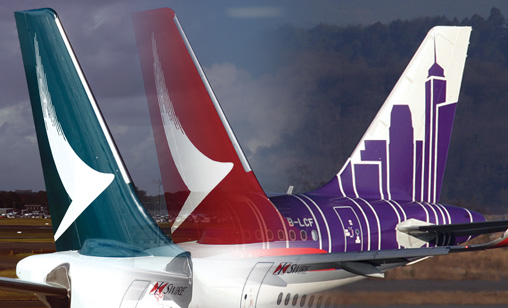News
Cathay Pacific’s to do list at HK Express
April 1st 2019
When Cathay Pacific first visits the office of new acquisition HK Express (HKE), one of the initial changes it may suggest will be a taking down of posters with aphorisms coined by the founder of HNA whose company is selling HKE. Read More »
One of the sayings is: “Kindliness to youth endows the superior with virtue.” That could be the future of the relationship. HKE has been a LCC for only 5.5 years and previously was hardly known. In contrast, Cathay is one of Asia’s storied airlines.
 |
Cathay will be able to help HKE, but Cathay may gain more by being able to transform into a more efficient and modern full-service airline.
Cathay Pacific announced its intent on 27 March to acquire HKE by the end of the year, subject to all approvals, and said that HKE would remain as a standalone LCC.
It is understood to have entered talks with HKE on the assumption the LCC has a revenue problem. Some sources claimed Cathay did not understand revenue management, inventory control and how low fares could still be profitable. HKE is said to actually have a cost problem. This is not inherently linked to repeated claims that Hong Kong is too costly to have a local LCC. Low-cost is not relative to Ryanair and AirAsia benchmarks. Low-cost in Hong Kong should be compared with direct competitors.
HKE had an unaudited loss of US$18m in 2018 and a profit of US$8m in 2017. The recent loss was mostly due to aircraft under-utilisation from A320neos and restructuring. Cathay and HKE could jointly manage their Hong Kong slots. Cathay’s bigger holding may mean it can largely keep its network intact but with adjustments that will make a big difference to HKE’s smaller slot holding.
This raises questions about how Cathay and HKE will work together, and if Cathay parachutes in its own staff. Cathay’s due diligence showed it does not have a low-cost mindset, according to sources.
A few years ago, when All Nippon Airways established LCC Peach, its managers wanted extra cabin crew on Peach flights because that was how ANA did rostering. The ANA managers thought they could be a budget airline because staff took turns emptying the office trash bins.
Cathay will most certainly clear out HKE’s HNA managers and middle management. Besides representing the previous shareholder, the nature of HNA’s structure often held back HKE from efficiency and growth.
Hong Kong Airlines hopes HKE CEO, Li Dianchun, will return to HKA, where he was previously CCO and ran a tight organisation.
The industry wonders if the Hong Kong government will request that HNA use the proceeds from the HKE sale to pay off debt at HKA.
Cathay is putting feelers out for external CEO candidates with LCC experience, according to a source. Cathay declined to comment.
Observers believe Cathay needs a leader who has been part of a dual-brand strategy, understands the legacy airline mindset and can be a communicator, even reconciler, between LCC and full-service parent.
It is to be determined if Cathay dictates strategy to HKE or the two form a group to manage overlap along the lines of a Qantas-Jetstar “flying committee”. HKE’s large chunk of capacity to Tokyo and Osaka has weakened Cathay but those are also some of the most profitable destinations for HKE. Cathay may have marginal routes or planned destinations that would be better served by HKE.
Cathay will have internal debates about how to partner and manage the passenger experience between its full-service brands and HK Express. History shows interlines and codeshares to be obvious. HKE uses Navitaire, which will smoothly link to Cathay’s Altea platform.
Cathay’s scale – 181 passenger aircraft at 31 December 2018 – will help HKE, which has 24 aircraft. The single largest item is likely to be aircraft leases for which HKE often over-paid due to legacy inheritance or seeking fast growth.
There is often a negative connotation from a full-service airline adopting tactics from its LCC subsidiary, derided by the public as the “Jetstarisation” of Qantas or the “Vuelingisation” of British Airways. Yet this is typically due to passenger-facing cost cuts. Cathay could make these too, but there is much else for Cathay to improve.
Cathay recently started charging for seat selection for some economy fares. It is trialling pre-selection of business class meals and could extend this to allowing economy passengers to buy a premium meal. HKE has a longer and more thorough history of merchandising tied to knowing your customer and targeting more relevant offers during the booking process but also crucially after ticketing and during the trip.
Cathay’s acquisition of HKE will be more complex than its takeover of then-Dragonair in 2006. Cathay has been the acquirer but in coming decades Cathay may be the acquiree as Air China increases its stake. These growing links and combination of airlines, as well as Qatar Airways' shareholding in Cathay, can be served by another HNA aphorism: “Harmony is the reason for groups to flourish.”